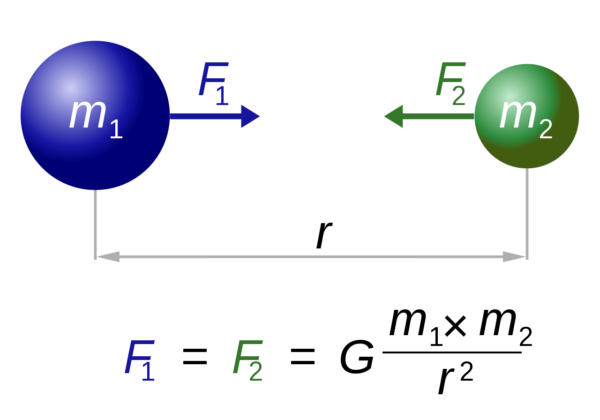Feeling lonely this Valentine’s Day? Attract the right romantic energy with a physics lesson from an unlikely love guru: Isaac Newton.
This is the first installment of our two-part series on Valentine’s Day.
It’s the middle of February, which means it’s Valentine’s season. Around you, couples are swapping boxes of Ferrero and oversized teddy bears, staring googly-eyed at each other over romantic dinners. And you? You’re on your second pint of ice cream, watching rom coms alone. It’s kind of sad.
But worry not! This is the year you will finally get a date. Science (specifically, physics) has the answer.
Presenting Newton’s Law of Universal Gravitation, which explains that bodies of mass exert an attractive force on each other. The amazing thing about this law is that it proposes gravitation to be universal: every particle in the universe attracts every other particle. From the movement of heavenly bodies to the way your feet are placed firmly on Earth, it is the same gravitational attraction that holds everything together. In a way, Newton proposes we are all drawn to each other.
Not even Jupiter, the biggest planet in our solar system, is exempt from this attraction. Observing the path of Jupiter’s orbit, a deviation, often called perturbation, can be observed just as it passes by Saturn. This is evidently caused by Saturn’s gravitational field drawing Jupiter in, throwing it off of its otherwise smooth orbit.
In fact, the Law of Universal Gravitation explains not only the existence of this attractive force, but also the factors that influence its strength. The magnitude of the gravitational force is directly proportional to the mass of the two objects attracting each other, and inversely proportional to the square of the distance between them.

In other words, heavy objects attract each other more than light objects, and objects that are close together attract each other more than objects that are far apart. Today, this sounds obvious, but in Newton’s time, it opened the door to a fascinating new paradigm.
Love pull, er, fool
“How does help me get a date?” I hear you asking. First of all, I hope it is clear how this helps you not get a date. I don’t think the person you like will take nicely to you explaining that you’re giving them chocolates because heavy objects attract each other more.
Instead, as an inquisitive individual and a true student of science, you might want to propose an experiment. If Newton’s law is valid, the closer two objects are to each other, the stronger the force of attraction. Thus, the closer you get to your special someone, the more they are supposed to be attracted to you. The only way to objectively verify this is through experimentation. Outlined below is a proposed lab procedure.
Trial 1. Drive up to Enchanted Kingdom. Only go on rides like Whirly Birds and carousels where you’ll be forced not to sit next to each other. This is testing the attractive force between two objects that are far apart.
Trial 2. Go for a nice dinner somewhere. Sit across each other, swapping fun anecdotes as you slurp bowls of sinigang and inhale mouthfuls of rice. This is testing the attractive force between two objects that are a little less far apart.
Trial 3. See a movie together. Sit next to each other in the cinema and, if possible, share a box of large popcorn. This is testing the attractive force between two objects that are close together.
If this Newton guy knew what he was saying, the other person will be more and more attracted to you with every date trial. And like any good experiment, of course, the more trials, the better.
Happy Valentine’s Day! –MF
Cover Photo: Dreamstime
References
- https://www.physicsclassroom.com/class/circles/Lesson-3/Newton-s-Law-of-Universal-Gravitation
- https://www.khanacademy.org/science/ap-physics-1/ap-centripetal-force-and-gravitation/newtons-law-of-gravitation-ap/a/newtons-law-of-gravitation-ap1
- https://en.wikipedia.org/wiki/Gravitational_constant#/media/File:NewtonsLawOfUniversalGravitation.svg,







